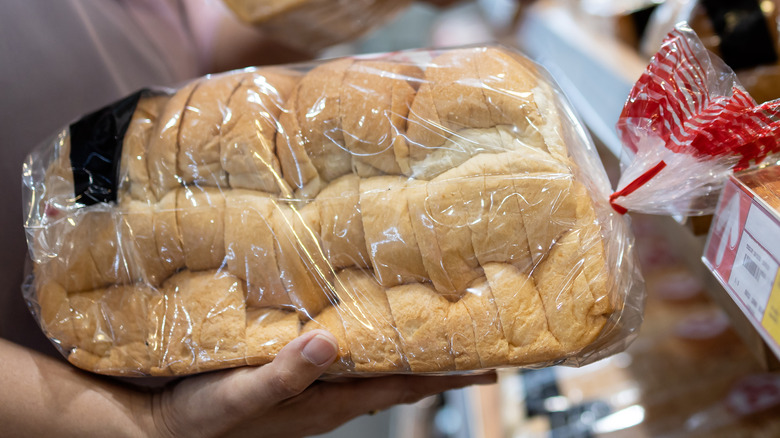Why The FDA Once Banned Sliced Bread
Whether you've used the phrase or just heard others throw the familiar words around, chances are "better than sliced bread" has been used to describe something in your life. But what you might not know is that sliced bread actually had quite a tough time of coming about. But the reason why sliced bread was slow to take off wasn't because of unpopularity or distrust like other convenience items of the past such as powdered eggs. Instead, the inventor of sliced bread had quite a challenge to overcome.
According to History, sliced bread didn't hit the market until July 6, 1928, some 11 years after the idea and early machines had been developed. As it turns out, in 1917, the blueprints and prototypes were lost to a fire that burned the Missouri factory where Otto Rohwedder had kept them. Thus, it would take some time for Rohwedder to truly launch his idea, but in time he did, successfully bringing his slicing machine to life despite the skepticism of bakers. Yet just 15 years after its debut, the FDA banned sliced bread.
The time when sliced bread was no more
After years of having the convenience item in grocery stores and ready on hand, the FDA brought an immediate halt to the production of sliced bread in 1943 during World War II. According to Taste of Home, the sliced bread, which was wrapped in plastic, was a luxury that couldn't be afforded to customers during war times. The plastic used to make the bags that the loaves of bread were packaged in needed to be allocated to the war effort instead.
Of course, the pantry staple had become so popular that the ban only lasted a meager three months before the FDA lifted it to quiet the disconcerted public. Apparently making homemade bread or slicing loaves at home became too much to ask during a war and people were pleased to have their sliced bread back.
So, keep in mind what a luxury bread as a convenience item is — one we largely take for granted — the next time you reach for it to make toast or a sandwich.

